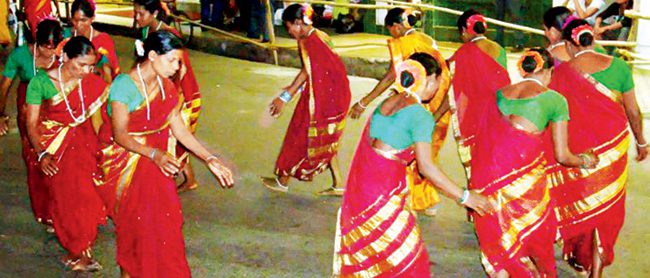
Goa, popularly known as ‘the pearl of the east’, is famous for its churches, coconut groves, ferry rides, and bubbly folk music. Goa is an important destination in every tourist’s journey. Goa is one of India’s special places, a State seemingly blessed with fabulous weather, even more fabulous beaches, lovely people, good food, hill-top forts, beautiful churches, high Portuguese-era cathedrals, a unique cultural, therefore, that Goa is one of India’s prime holiday destinations.
On 19 December 1961, the Indian Army began military operations with Operation Vijay resulting in the annexation of Goa, Daman, and Diu into the Indian union. | Learn more about India’s 28 States and 8 Union Territories – From Andhra Pradesh to West Bengal >>The main language spoken by the people of Goa is Konkani. The tongue of the Konkani language varies depending on the nativity of the people and some of them are Bardeskari, Sashtikari, Pednekari and Antruj Bhasha. The Hindu people living in Goa refer to themselves as Konkani and Devanagari who are mainly the residents of Konkan. The Goans are mainly happy go lucky people who always extend a warm and a friendly relationship. They are very hospitable and enjoy each and every moment of life. They live their life they wish to. The culture of the Goans is a blend of their people, festivals, music and dance. […]
* Message by Chairman
As primary settlers of Goa, the tribals have still maintained their ancient rituals and customs and are well connected to their roots. With their rich heritage the tribals have enormously contributed towards the growth and development of our land. Even after much advancement of life, the tribals of Goa still remain to be backward, exploited and vulnerable to social and economical injustice. Our sincere endeavour to promote and fortify the economic interest of our Scheduled Tribes Community, especially the weaker sections, shall continue with our co-ordinated efforts to strengthen, to support and to protect the tribal community of Goa.
* Message by Minister of Tribal Welfare
Poverty and exploitation, economic and technological backwardness, socio-cultural handicaps are some of the problems faced by the tribal communities of Goa. Alienated from their own lands, the tribal communities continue to be marginalised. The tribal of Goa have a long and rich cultural past and have progressively contributed towards the political, economic and social growth of Goa. Our aim is to underprivileged members of our tribal community with an obligation to make a difference in their lives and shall continue with our efforts to provide better services towards upliftment of Scheduled Tribes Communities of Goa.
Source: Goa State Scheduled Tribes Finance and Development Corporation Limited (“subscribed by Government of Goa and Ministry of Tribal Affairs Government of India, New Delhi”)
URL: https://stcorporation.goa.gov.in
Date visited: 8 October 2020
[Bold typeface added above for emphasis]
Up-to-date reports by Indian journalists and commentators
To search Indian periodicals, magazines, web portals and other sources safely, click here. To find an Indian PhD thesis on a particular tribal community, region and related issues, click here >>
Search tips
Combine the name of any particular state, language or region with that of any tribal (Adivasi) community.
Add keywords of special interest (music, poetry, dance just as health, sacred grove and biodiversity); learn about the rights of Scheduled Tribes such as the “Forest Rights Act” (FRA); and the United Nations “Declaration on the Rights of Indigenous Peoples”, “Universal Declaration of Human Rights”, “women’s rights”, or “children’s right to education”.
Ask a question that includes “tribal” or “Adivasi”, for instance: “Adivasi way of life better?” (or “tribal way of life worse?”)
Specify any particular issue or news item (biodiversity, bonded labour and human trafficking, climate change, ecology, economic development, ethnobotany, ethnomedicine, global warming, hunter-gatherers in a particular region or state, prevention of rural poverty, water access).
For official figures include “scheduled tribe ST” along with a union state or region: e.g. “Chhattisgarh ST community”, “Himalayan tribe”, “Scheduled tribe Tamil Nadu census”, “ST Kerala census”, “Particularly Vulnerable Tribal Group Jharkhand”, “PVTG Rajasthan”, “Adivasi ST Kerala”, “Adibasi ST West Bengal” etc.
In case the Google Custom Search window is not displayed here try the following: (1) toggle between “Reader” and regular viewing; (2) in your browser’s Security settings select “Enable JavaScript” | More tips >>
Note: hyperlinks and quotes are meant for fact-checking and information purposes only | Disclaimer >>
See also
Adverse inclusion | Casteism | Rural poverty
Childhood | Tribal Children’s Right to Education in India
Demographic Status of Scheduled Tribe Population of India (Census figures 2011)
Fact checking | Figures, census and other statistics
Human Rights Commission (posts) | www.nhrc.nic.in (Government of India)
Search tips | Names of tribal communities, regions and states of India
“What is the Forest Rights Act about?” – Campaign for Survival and Dignity
“Who are Scheduled Tribes?” – Government of India (National Commission for Scheduled Tribes, NCST)